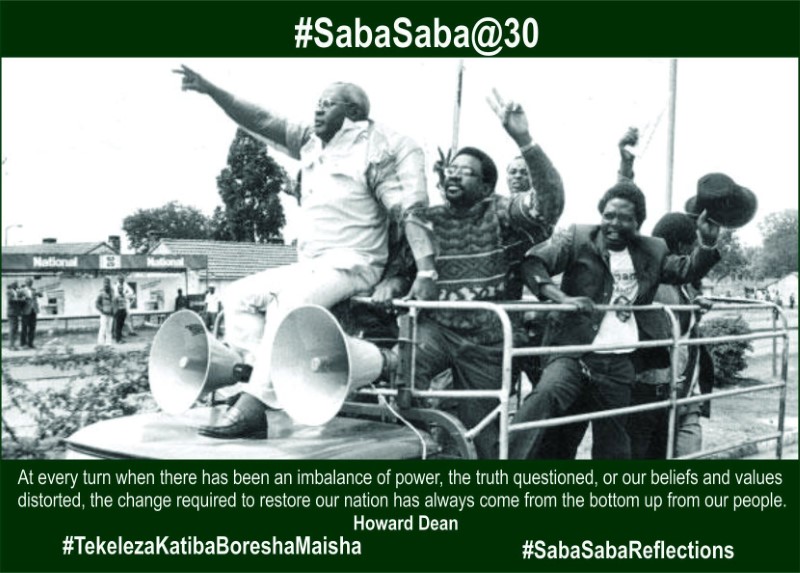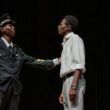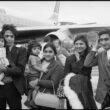The time was ripe for protest and revolution. Kenyans had had enough.
When Moi took over from Jomo Kenyatta in 1978, in true nyayo fashion he perfected the art of state torture and repression. That was the only way he could cement his dictatorial rule.
The resistance had taken the form of underground resistance and organizing; initially terming itself ‘The Workers Party’, then ‘December Twelfth Movement’ (DTM) which later morphed into the Mwakenya Movement – all committed to bringing an end to the dictatorship. These groups organized at the Universities and within Churches, Cultural Centres, Trade Unions and other sites of people’s struggles. Plays like ‘Dedan Kimathi’ (co-authored by Ngugi wa Thiongo and Micere Mugo), ‘Ngaahika Ndenda’ (co-authored by Ngugi wa Thiongo and Ngugi wa Mirii) and ‘Maitu Njugira’ (Ngugi wa Thiongo) provided fertile ground for cultural resistance and organizing based on patriotic histories.
In June 1982, the Kenyan constitution was amended to transform the de facto one-party rule in the country into an official, de jure one-party state. July saw the emergence of the Committee for the Release of Political Prisoners in Kenya (CRPPK), a London-based organization, as a ‘solidarity organisation’ for those arrested, detained or harassed for their political beliefs and activities in Kenya. The CRPPK was committed to exposing Moi’s ‘systematic attacks on intellectual, political and cultural life’. Soon after, the attempted coup in August 1982 gave Moi the perfect excuse to turn Kenya into a repressive, dictatorial state and cement his rule.

UMOJA (Umoja wa Kupigania Demokrasia Kenya) was founded on 18 February 1987 on the thirtieth anniversary of the death of Dedan Kimathi as a union of seven Kenyan political organisations working abroad as a platform of unity against the KANU dictatorship. UMOJA’s membership was drawn from the United Kingdom, the United States, Australia, Denmark, Italy, Norway and Sweden, with a Central Secretariat based in London. In Britain, UMOJA absorbed the organisation UKenya; its chair Yusuf Hassan would later be succeeded first by Ngugi wa Thiongo and then by Abdillatif Abdalla. Pambana, Haki ya Demokrasia Kenya (HDK) and Mpatanishi were publications of the underground movements.
Moi’s systematic attacks on intellectuals, politicians, lawyers, students, writers, workers and peasants continued unabated and the country became a police state where people talked in hushed tones even within the safe spaces of their homes as the ‘Special Branch’ infiltrated almost all social life in Kenya. Hundreds were detained and tortured at ‘Nyayo House’ basements, jailed for lengthy prison terms by Kangaroo courts convened after normal working hours and many fled the country fearing for their lives and unable to earn their livelihood in Kenya.
The resistance was led by parliamentarian backbenchers who were labelled the ‘Seven Bearded Sisters’ by the then Attorney General, Charles Njonjo. The seven were: Abuya Abuya, Onyango Midika, Mwashengu wa Mwachofi, James Orengo, Lawrence Sifuna, Chibule wa Tsuma and Koigi wa Wamwere. Moi muzzled Parliament and arrested politicians within the grounds of the august House; but others outside Parliament like George Anyona, Chelagat Mutai, Wasike Ndobi and other valiant democrats kept the system in check and on its toes.
The legal fraternity had their own ‘Urban Legal Guerillas’ with doyens like Paul Muite, Gitobu Imanyara, James Orengo, Gibson Kamau Kuria, Kiraitu Murungi, Mirugi Kariuki, Pheroze Nowrojee, John Khaminwa, Martha Karua, Kathurima M’Inoti and Rumba Kinuthia as the legal resistance to the dictatorship.
Bedan Mbugua called out the Moi Government over voter fraud through his magazine Beyond, which was published by the National Christian Council of Kenya (NCCK). Other publications like Society (Editor – Pius Nyamora), Nairobi Law Monthly (Editor – Gitobu Imanyara) and Finance (Editor – Peter Kareiithi) championed the democratic cause. All these publications suffered harassment and banning at some point.

The brutal murder of Foreign Minister Robert Ouko in February 1992 led to an international outcry and protests – the repressive state had exposed the extent to which the system would go to protect its hold on power. It confirmed that in spite of the change in Government, matters had only gotten worse. Even the US, which relied on the KANU dictatorship to protect its position in Kenya during this cold war period, had had enough.
The state was racked by multiple tensions – how much more could it hold up against the enormous national angst and international outcry directed at the neo-colonial draconian state apparatus? The people’s resistance had brought the tension to fever pitch. The revolt from the inside imploded the system. Kenneth Matiba and Charles Rubia, two politicians within the system, led the implosion. They realized that the future of a modern Kenya lay in a democratic country that gave its citizens the opportunity to participate in, and benefit from, its economic potential. They called for a return to a ‘Multi-Party’ state.
On 6 June 1990, Kenneth Matiba and Charles Rubia announced that they intended to call a Kamukunji (public meeting) in Nairobi on 7 July to demand for the return of multi-partyism. On 4 July, the Government banned the meeting and both respected politicians were arrested. Their lawyer, John Khaminwa, was detained after trying to visit them. Two more human rights lawyers, Gitobu Imanyara and Gibson Kamau Kuria, were arrested along with Raila Odinga.
However, the genie was out of the bottle! The allusion of a Second Liberation took root. On 16 November 1991 political leaders Martin Shikuku, James Orengo, Philip Gachoka and Rumba Kinuthia rode through the streets on a Toyota pick-up flashing V-shaped signs on their way to the historical site of ‘Kamukunji’ in the Eastlands area of Nairobi which has been a symbolic site of freedom and justice since the colonial days. Hot in their pursuit were the security forces hopelessly outdone even as they hurled tear gas, opened fire, and beat up the cheering wananchi. KANU, the edifice of national oppression was crumbling right before the eyes of the nation. On 2 December 1991, Moi capitulated; multi-partyism was reinstated, and some 19 new political parties were registered.

Predominant in the Kenyan psyche is the role of Jaramogi Oginga Odinga who had served as the first vice president of Kenya in 1963 and been side-lined ever since. His steadfast, unwavering commitment to democracy, justice and the rule of law remains a permanent imprint in Kenya’s history; and for which he and his family have paid a heavy price. In 1991, he co-founded and became the interim chair of the Forum for Restoration of Democracy (FORD), which catalysed the final ousting of KANU from power in 2002.
In memory of the initial meeting planned for 7 July 1990, a ‘Saba Saba’ (7/7) movement was founded and was replicated by monthly protests in ‘Nane Nane’, ‘Tisa Tisa’ and ‘Kumi Kumi’. However, ‘Saba Saba’ has become the pivotal date, which symbolizes a total rejection of state repression and dominance and reclaiming of the democratic space that Kenyans so yearned for. The term ‘Second Liberation’ became the moniker and remains a focal point of reference in the continued search for a truly democratic Kenyan state, yet to be attained.
This special issue of AwaaZ will capture the period from 1990 to the present as the continued search and struggle for a truly democratic state continues. It will relate the story of the Saba Saba marches and capture the stories of the individuals who took part and gave their lives for the liberation struggle. Woven into that history will be the forgotten stories of the work put in by organisations such as the National Convention Executive Council (NCEC), Release Political Prisoners (RPP) and the Limuru conferences that provided much of the intellectual resources that were needed to nurture and guide the movement. It will take the story up to the present day, where a new generation of activists sited in progressive groups including the social justice movements, have started to own and inherit the mantles of a generation gone by.




